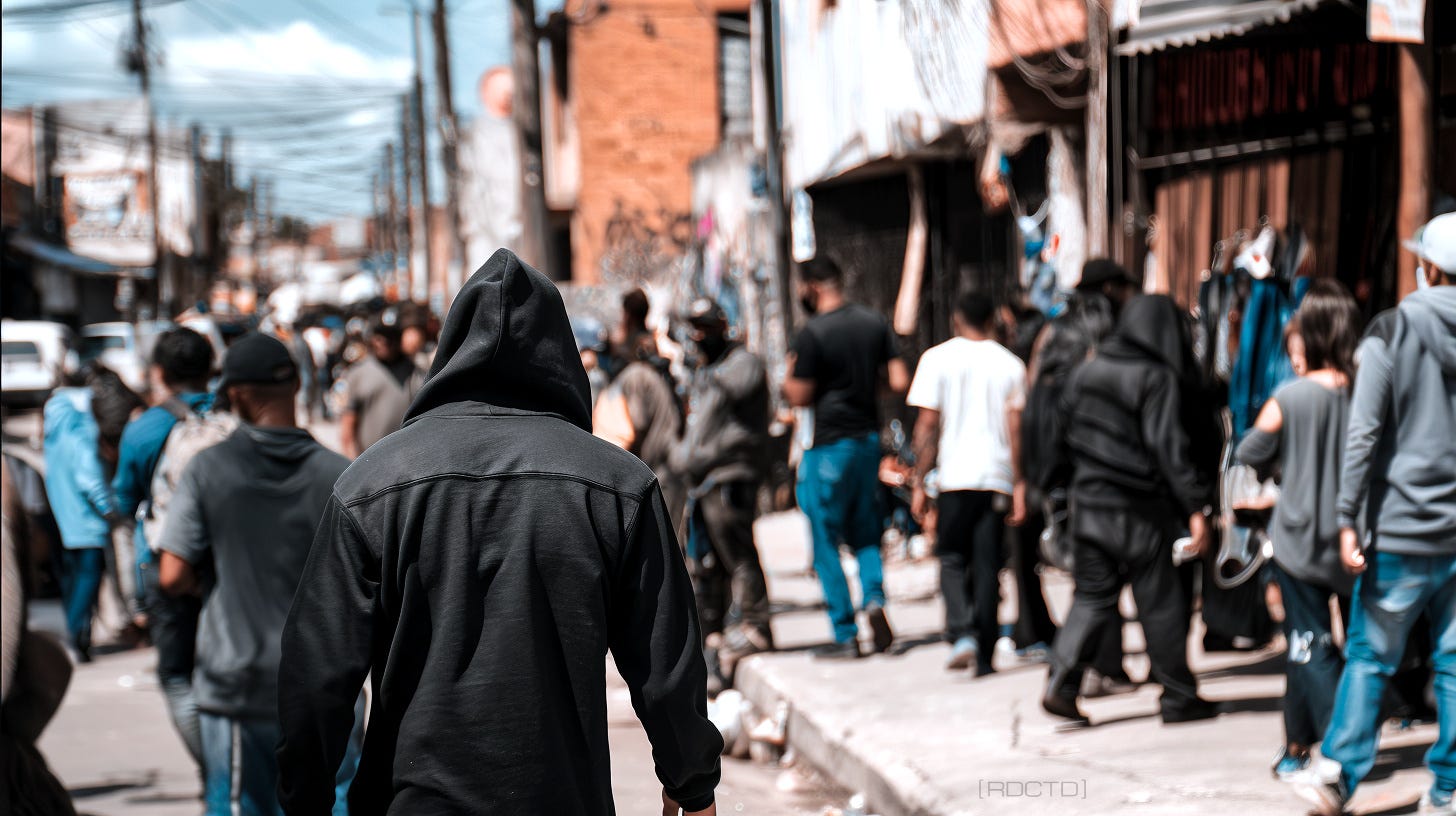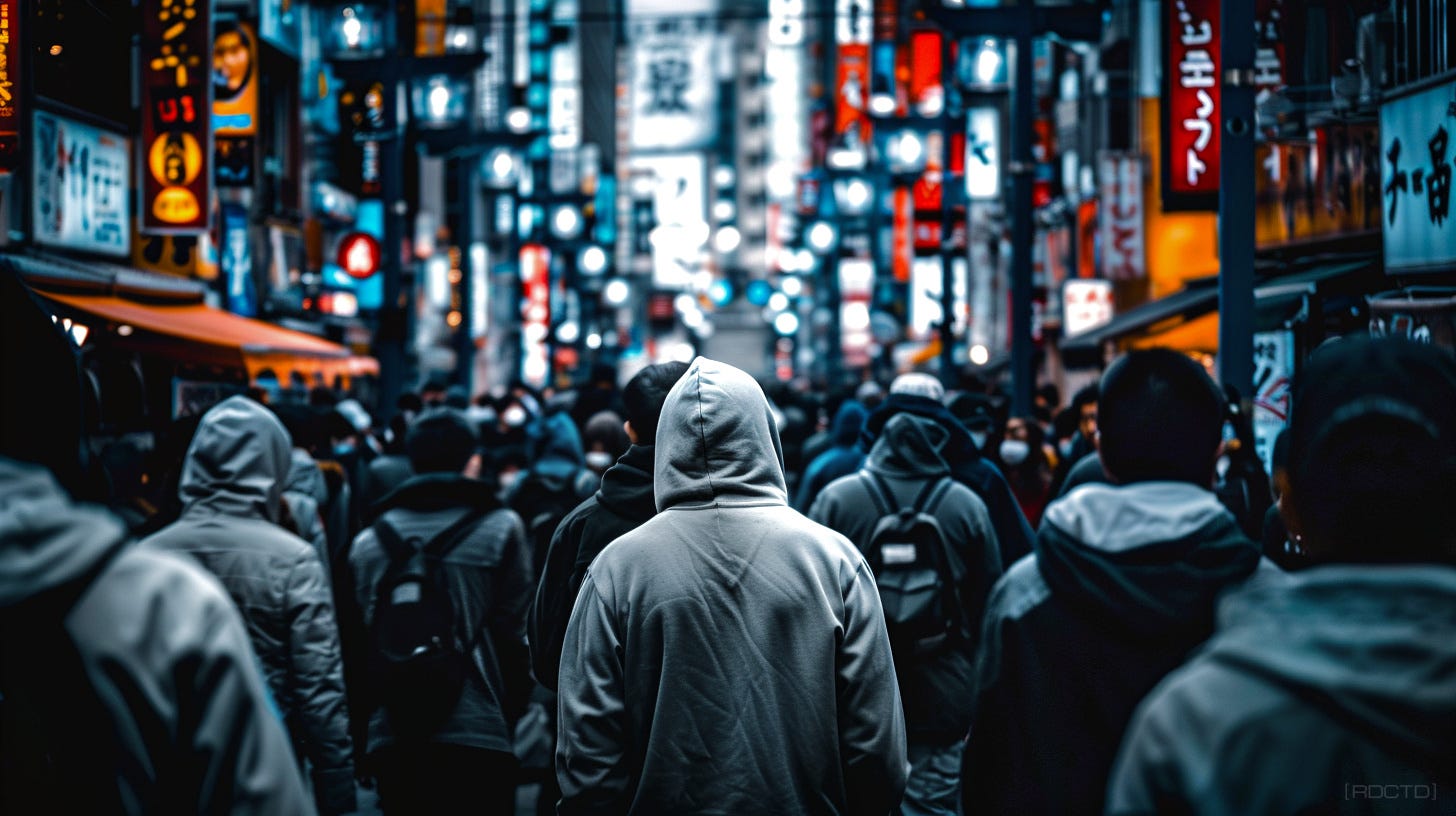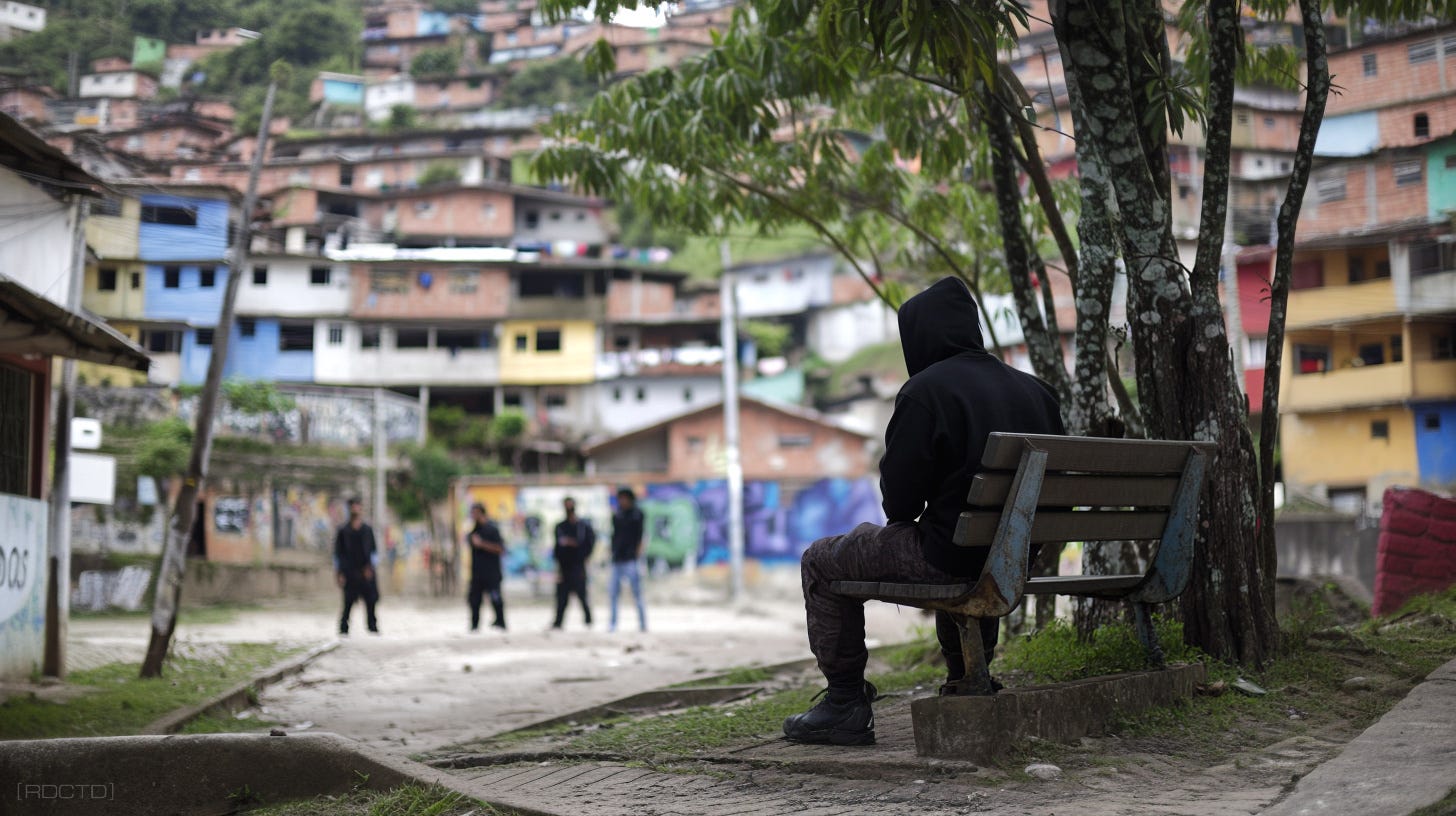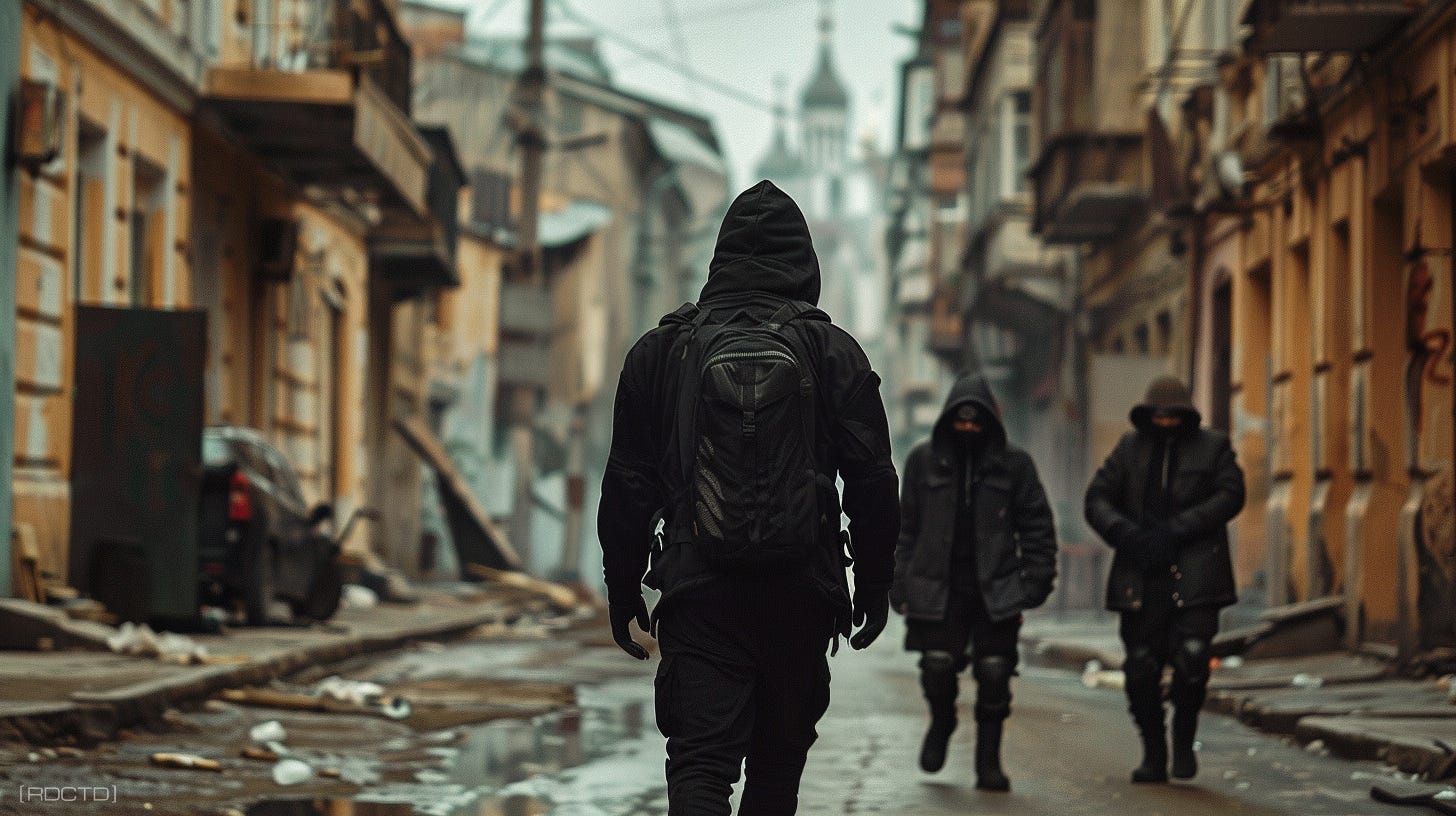Civilian ‘Rhythm’ Camouflage: Overt Urban Invisibility in Motion
Gray Man Mechanics in The Streets
Covert operatives disappear not behind walls, but in plain sight, riding the tempo of civilian life.
The tactic of syncing your movement, posture, and energy with the natural tempo of your environment. Beyond walking like and with the crowd, it’s matching the invisible cadence of a space: pace, timing, behavioral cues, habits...
Operatives who fail to tune in get clocked fast - not always consciously, but enough to trigger suspicion or surveillance interest. This is tradecraft at the micro-level: blending not just visually, but temporally. Because being in the right place at the wrong rhythm still gets you burned.
This is one of those gray man principles that doesn’t sound all that flashy, but it’ll keep you alive and unburned longer than any shiny piece of gear or tech.
The concept simple: if you’re operating in civilian areas, move like a civilian. That doesn’t just mean walking with the crowd - it means syncing with the daily pulse of life around you. Every space, every block, every hour has its own tempo. Your job is to blend into that beat like you’ve always been part of the background.
You don’t chase or hide in the crowd; you become the crowd.
Reading the “Room”, Matching the Flow
If you’re in a business district at 8:00 AM on a Monday, people are rushing with purpose. Phones out, eyes focused, coffee in hand, walking like they’re five minutes late to something important. That’s not the time to be meandering, hovering near entrances, or pausing too long at corners. You move with intent, not hesitation.
Now flip that to 2:00 PM in a public park on a Saturday: same city, same general area, but a completely different rhythm. People are slower, scattered, maybe stretched out on benches or strolling with no destination in mind. That’s when sharp, brisk pacing draws attention. Not because of what you’re wearing, but because your energy doesn’t match the environment.
Movement is context, and the tempo around you is part of the cover. If you’re the only one cutting through the space with urgency, while everyone else is drifting, you’ll stick out like a sore thumb. No matter how perfect your cover story is.
Matching the energy of the space means reading the room or the street and adapting in real-time. This is where most civilians and frankly, a lot of rookies screw up. They think being invisible is about physically hiding, standing still or dressing ultra bland. But real invisibility is behavioral. It’s about aligning your tempo so seamlessly that people’s eyes slide right past you.
That’s basic gray man tradecraft. It’s not flashy but it keeps you clean in environments where being noticed is as good as being burned. This is micro-level situational awareness: knowing not just where you are, but when you are - and what the people around you expect to see at that moment. Get that wrong, and no amount of paperwork or cover ID will save you.
Camouflage That Works Before You’re Even Seen
The purpose? Avoiding attention, period. Civilian rhythm camouflage for all intents and purposes is to stay nondescript and forgettable. Any operative moving against the rhythm (too slow, too sharp, too deliberate) even if they’re dressed right and carrying a flawless cover, will trigger subconscious alarms in everyone around them.
Civilians might not know why you feel out of place, but their brains will clock the anomaly. It’s instinctual. They might glance once, then again, and that’s all it takes for a tail to form, for someone to remember you later, or for a bystander to become an unexpected witness.
Surveillance teams, on the other hand, aren’t guessing. They’re trained to look for rhythm breaks. The one person in the plaza who doesn’t match the tempo, the single pedestrian walking upstream at the wrong time of day, the loiterer with no clear anchor behavior. That’s how professionals track you without tipping their hand.
Rhythm mismatches are like beacons to them, louder than any poor disguise. Civilians may forget your face, but they’ll remember how you moved if it doesn’t match the environment.
Camouflage works before anyone has a chance to consciously assess you. Rhythm camouflage is that early-stage defense - it shields you from interest before you’re even fully processed as a presence. It buys you those critical extra seconds to slip away, reposition, or pass unnoticed, whether you’re conducting surveillance, shadowing a target, or staying low between phases of an op.
Every second you’re not being clocked is one more tool in your pocket. In a tight spot, that’s the kind of edge that keeps your face off a board and your name out of an incident report.
Sustainability in the Shadows
One major benefit of this approach is sustainability, something most rookies overlook. Anyone can hide in a crowd once. Anyone can get lucky and blend for five minutes. But real operators don’t work in one-and-done scenarios.
When you’re working a long-duration tail, running static surveillance, or conducting repeated passes near a meeting site, you need a movement profile that doesn’t draw heat over time. That’s where rhythm camouflage earns its weight in gold. It lets you blend consistently, not just convincingly.
Moving with the civilian rhythm means you can stay in a single area longer without tripping alarms - whether that’s street-level instinct or surveillance flagging your presence. You become part of the scenery, a fixture that doesn’t stand out, because your tempo and behavior match the natural cadence of the space.
That’s how you run loops, wait out delays, or reposition multiple times without triggering questions. Instead of hiding out, you’re functionally invisible in a space that’s already occupied by real civilians. You’re slipping through the seams.
Executing the Rhythm
So how do you actually enact civilian rhythm camouflage? You start by doing what most people skim on - observing. Don’t move until you’ve watched. Your environment will give you everything you need if you know what to look for.
Every crowd has a baseline, and your job is to match it. Not perfectly, not stiffly, but naturally, like you were always supposed to be there.
Start by scanning for key behavioral cues:
Keep reading with a 7-day free trial
Subscribe to The Tradecraft Guide to keep reading this post and get 7 days of free access to the full post archives.








